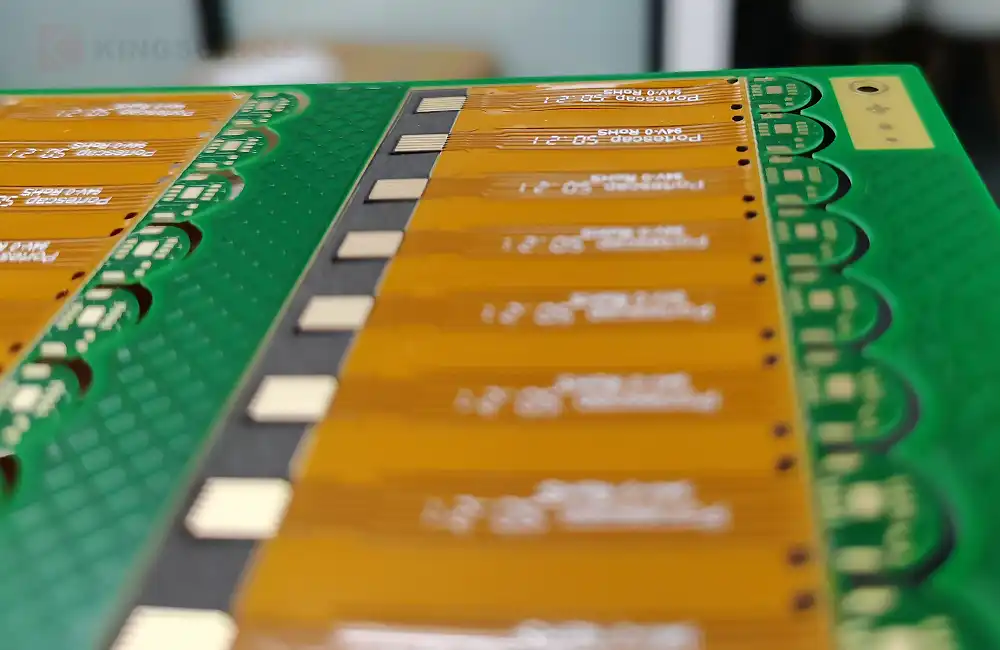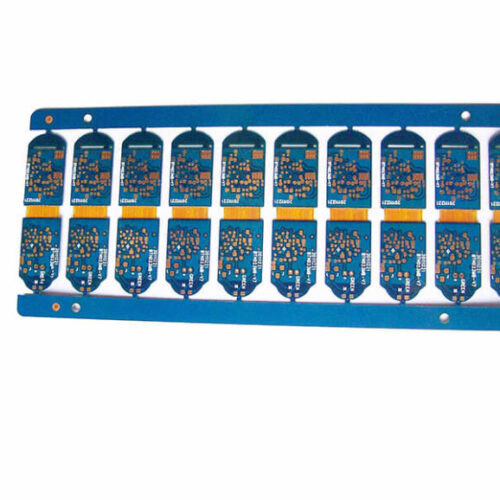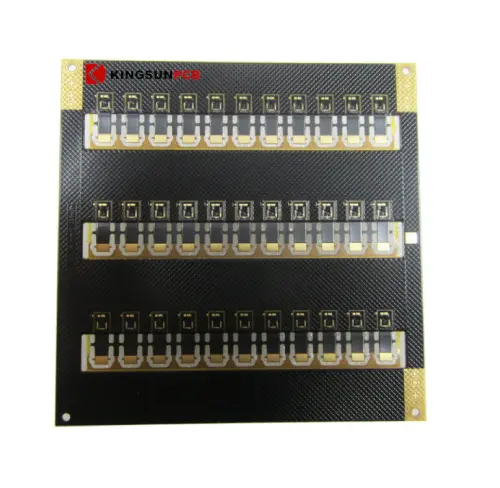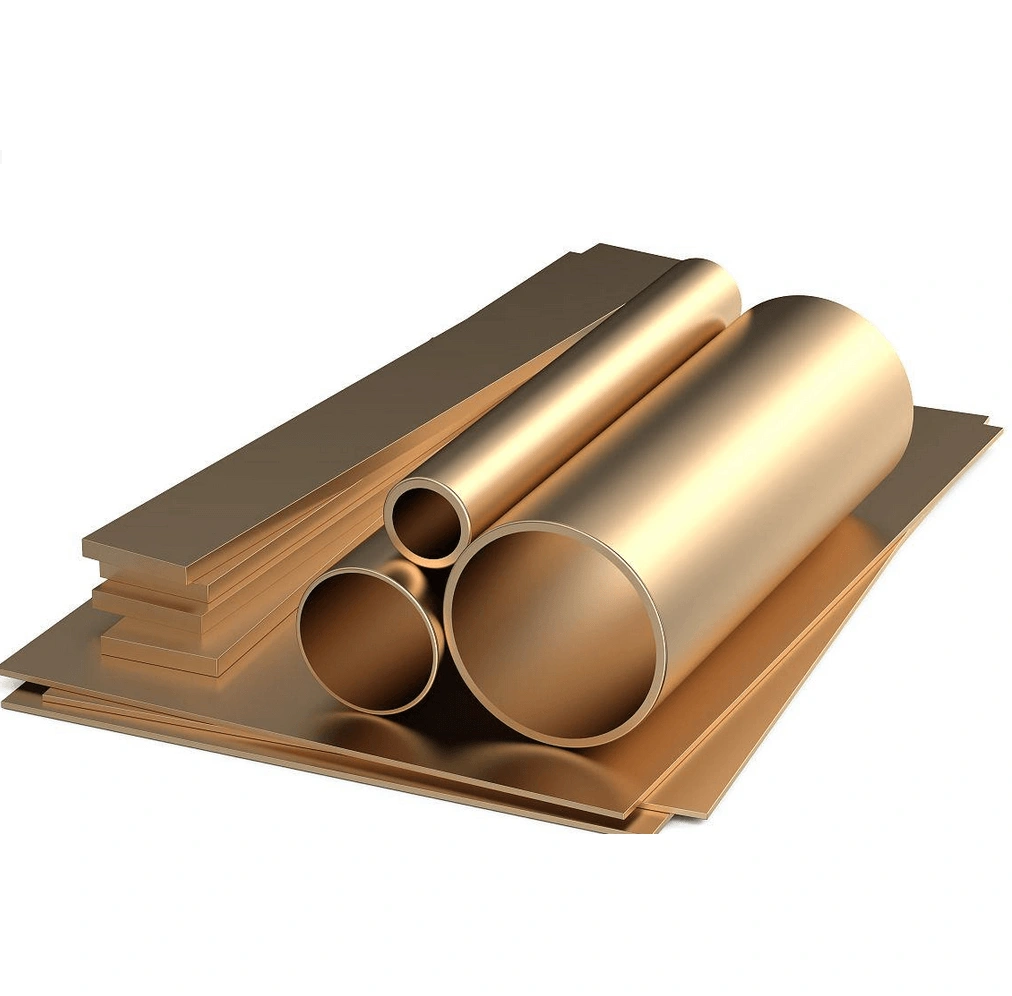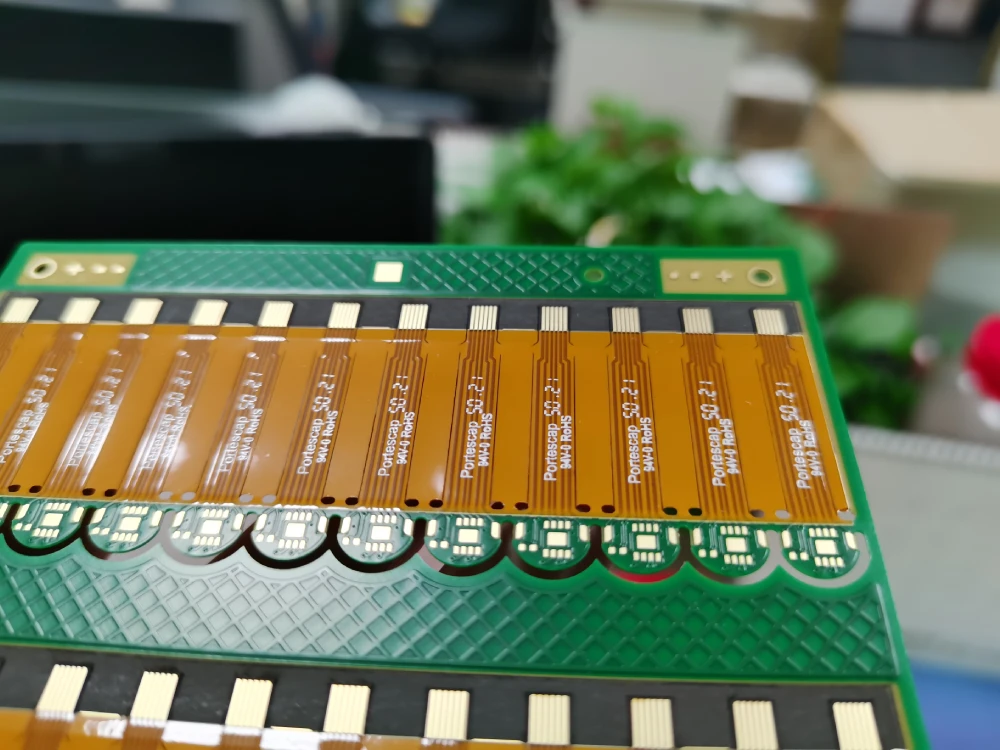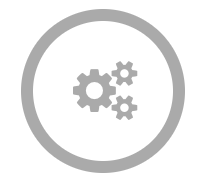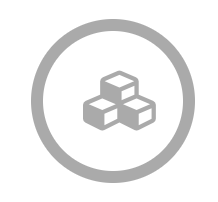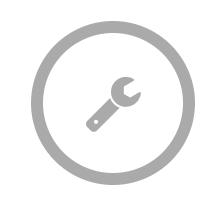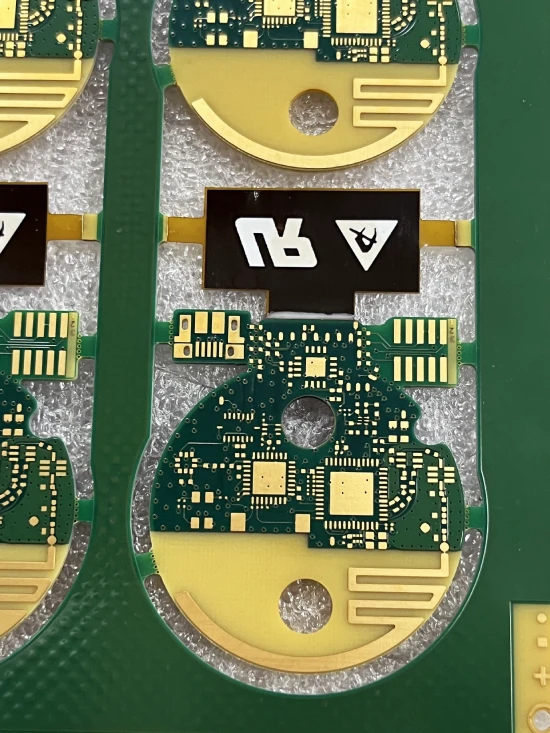Material Shearing
Rigid-flex board and flexible PCB board with single-sided is not allowed to cut single-sided sheet directly. They must be etched into single-sided sheets from 2-layer flex PCB. This ensures the bonding force between layers and avoids delamination.
Inner Layer Circuit
Check that the FlexPCB is flat. It should have no discounts, wrinkles, or glue stains on the board surface.
All flex board PCBs must be attached to the pallet for development and etching. One pallet is attached to one flex PCB to stop it from being folded and wrinkled by etching.
All boards must pass through AOI, and the flex-printed circuit does not allow supplementary lines.
Rigid Flex PCB Lamination
Rigid-flex PCB board lamination must use a special program. The lamination program can not be mixed with other boards.
When the flex PCB is browned, it must be attached with a pallet. After browning, the flexible circuit board with wrinkles will be discarded. Before riveting, the flexible PCB board must be browned OK.
After riveting FR-4, flex PCB, and No-Flow PP, first check for less or more PP. Then, use an X-ray to check for layer deviation.
NC Drilling
Rigid Flex PCB drilling is a process of PCB manufacturing, and it is also a very important step.
The inspection process checks for glue burrs on the flexible circuit board at the T position of the rigid and flex PCB joint. If there is any abnormality, notify the process in time for follow-up processing.
Plating Through Hole
The program for besmearing the rigid-flex board is special. Please pay attention to switching the besmearing program before copper plating.
After removing the slag, the rigid, flexible printed circuit board is copper-precipitated according to the 2-layer PCB procedure after the PI is adjusted. The PI potion is prepared according to the volume concentration of 40%. The working temperature of the potion is 40°C, and the adjustment time is 4~8MIN.
Rigid Flex PCB Board Opening Technology
The rigid flex board is not an ordinary circuit board, but is composed of a rigid circuit board and a flex circuit board. The flexible area of the rigid-flex PCB board is formed by removing the rigid layer in the area, leaving only the flexible layer and removing the rigid layer. The whole process is called opening technology.
There are three ways to open the rigid, flexible board: laser opening, gong machine-controlled deep opening, and V-CUT opening.
Rigid Flex PCB Circuit Open-Short Circut Test
The electrical performance of the rigid-flex PCB is usually achieved through the PCB open-short circuit test. There are two test methods of PCB open-short circuit test. One is a fixture test, and the other is a flying probe test.
Fixture testing is based on the test points on the circuit board. A fixture with a bed of needles and many thin needles is made. Each needle corresponds to a test point and is pressed to make contact. Then, conduct a continuity test or a functional test.
A flying probe test is a rapid movement of several probes to these test points. The probes then touch the points and the instrument measures the results. Inspection of Rigid-Flex PCB Board
Dimension Measurement: Measure if the PCB's size matches the customer's original design file.
Holes: Check for missing holes, multiple holes, blocked holes, and hole sizes if they match the rigid-flex PCB design file.
Circuit: No short circuit, open circuit, exposed copper in the conductor, floating copper foil, repair wire, etc.
Silkscreen Printing: Characters and symbols must be printed on the rigid-flex PCB's surface. The printing must be clear and obvious, and the color must meet the requirements. There must not be repeated, missing, or extra printing, or printing in the wrong place.
Inspect rigid-flex PCBs for warp and twist. The IPC-6012 standard says they should be under 0.75%. Solderability Test: Take part of the rigid-flex PCB for actual soldering to check whether the parts can be easily soldered.
Packaging: colorless air bag vacuum packaging, with a desiccant inside, tightly packed.
